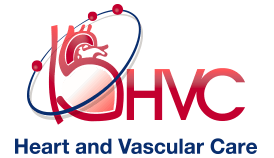Coronary Artery Disease
Alpharetta Coronary Artery Disease

Coronary artery disease is the most common form of cardiac disease and the most common cause of death in the United States, afflicting millions of people and causing over 735,000 heart attacks every year. Caused by a buildup of plaque on the blood vessel walls or inflammation of the blood vessels, if left untreated or undiagnosed, coronary artery disease leads to heart attacks, heart failure, and strokes.
Some of the most common symptoms are shortness of breath and chest pain or angina. A number of factors can contribute to damaging the arteries of the coronary artery, depositing plaque and causing inflammation:
- Smoking.
- High blood pressure.
- Diabetes.
- High LDL cholesterol.
- A sedentary lifestyle.
- Examining your lifestyle could help you determine if you need to make some changes.
What are the symptoms?
Some of the symptoms are:
- Chest pain.
- Shortness of breath.
- Heart palpitations.
- Fatigue.
- But some patients also have no symptoms.
What can I do to prevent CAD?
Some preventative measures include:
- Eat a healthy diet.
- Reduce stress.
- Exercise.
- Don’t smoke.
- Maintain a healthy weight.
How can Coronary Artery Disease be treated?
Treatment for CAD includes medical therapy, coronary balloon angioplasty and stenting, and coronary artery bypass surgery:
- Medical therapy: Many patients with coronary artery blockages that are less than 70% or that are not having limiting symptoms can be treated with medications instead of procedures. These medications may include aspirin, beta-blockers, calcium channel blockers, nitroglycerin, ranolazine, and cholesterol medications known as statins. Also, diet and exercise are an important part of medical therapy.
- Coronary balloon angioplasty and stenting (link to this page in Procedures): When a patient is having a heart attack or having symptoms despite optimal medical therapy, a cardiologist inserts catheters into the artery of the wrist or groin and uses contrast dye to image the arteries of the heart. Then the cardiologist can open the closed artery of the heart using a small balloon and also a metallic stent. The physicians at Heart and Vascular Care are experts at performing these procedures using an innovative minimally invasive technique, a single needle stick in the blood vessel of the wrist (radial artery).
- Coronary artery bypass surgery: Some patients with CAD require open-heart surgery known as coronary artery bypass surgery or CABG. This is often recommended when all 3 of the major heart arteries are blocked if the arteries are 100% blocked, if the heart function is weak, or if the patient is a diabetic.
